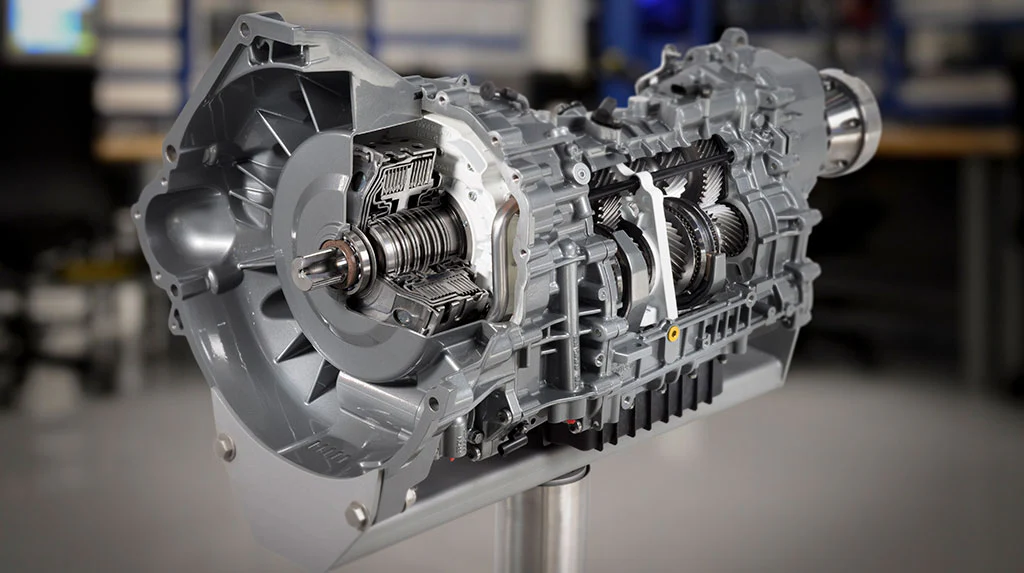 24.Jul.2021
24.Jul.2021
Automatic Transmission Vs Manual Transmission
Here is the discussion of Automatic & Manual Transmission. Which one is better? This discussion has been debating for more than seven decades. Both the transmissions are entirely different principles of working and use a different configurations.
Manual based on a simple gear pair, and another one is based on the planetary gear set. The automatic transmission uses the torque converter, and the manual uses the clutch pack.
Let's discuss some logical comparisons of these technologies. But, first, we will try to understand the basic science of the Transmission System.
An Internal combustion engine produces proper torque and power only during a specific speed range. Due to this inherent problem of IC, it cannot connect the engine directly to the wheels. Such a system will give very low efficiency. Therefore, to increase efficiency, engineers place a Transmission System in between so that the engine's RPM can always be in maximum efficiency range. The transmission takes care of the speed variation of the drive wheels.
First, let's see how the speed variation is achieved in the Manual Transmission System.
A manual transmission is a system of gear pairs, and it has three sections Input, Intermediate shaft, and Output.

The input is connected to the intermediate shaft, so the intermediate shaft continuously rotates at a constant speed. Then the intermediate shaft is connected to the output gear set. That can rotate at different speeds into different speed ratios by shifting the gears. However, the output gears are not fixed with the output shaft, and there is a gap between the output gears and shaft. If we connect only one output gear to the shaft, the shaft will have the speed of the connected gear.
The main shaft gears have a synchronizer cone teeth arrangement. A hub is connected to the shaft and sleeve sides over it. By moving this sleeve, you will be able to connect the gear and shaft. During an actual operation, the hub and gear will be rotating at different speeds. The sleeve gear connections are not possible as they do so. For that, the speed should be the same, and we must discontinue the power flow of the transmission. The use of a clutch pack comes here. By disengaging the clutch pack, the power flow to the gear set is discontinued. Now, a synchronizer ring with friction helps to match the speed of gear with the sleeve.
When there is no power flow pushing the synchronizer ring against the gear will help match the speed of the gear to the hub. After the connection, the clutch pack is engaged. So every time you need to change the gear, you must disengage the clutch. This means power discontinuation and associated speed drop during the gear change. That is why manual transmission is never a smooth driving experience.
Now, we will discuss How Automatic Transmission works?

The Automatic Transmission develops to overcome the power discontinuation. And It uses a planet gearset arrangement rather than a simple gear-pair. It has two inputs and one output.
The basic principle of an automatic transmission is simple to vary two inputs speeds, and you will get different output speeds. To achieve this objective, there is one more planetary set attached. The output of the second set is connected with one of the inputs of the first set. There are two clutch packs to arrest the motion of the ring gears. When the clutch pack is pressed, the corresponding ring gear will be stationary, and the carrier will rotate. In this mechanism, there is no loss of power in the transmission. Four-speed variants are possible in two planetary set arrangements. And by using three planetary sets, we can achieve six-speed variations, including reverse.
Now let's compare these two technologies.

As we have seen in the Automatic Transmission, there is a constant power flow. There is no power loss and power discontinuation. Hence, the driving experience is very smooth. Also, computer-operated driving makes it significantly simpler.
On the other hand, The Manual Transmission mechanism is significantly more straightforward than the automatic. It is also easier to repair and has low-cost maintenance. Also, when it comes to heavy lifting, the manual transmission has more durability. In the manual system, the brakes system is different. You always need to press the full clutch before applying the brakes. The pressing of the clutch separates the rotation of the engine and wheel. Due to this, the sudden cessation of the wheel will not be transmitted into the engine.
However, there is no clutch pedal in the automatic transmission car. So, to separate the engine and wheel rotation, a torque converter is used. This fluid coupling allows slippage, so a torque converter helps the braking scenario without the need for a clutch pedal. The torque converter is a good heat generator which in turn reduces the efficiency of the vehicle.
Consequently, automatic transmission vehicle tends to become less fuel-efficient than manual vehicles. However, modern torque converters have overcome this problem.
We hope next time you will buy a new car. You can easily select the vehicle as per your suitability.
For your old car, we are here to bring you Transmission Parts. You will get all types of Transmission Parts on our online store- www.hndautomotiveparts.com
We have Mercedes Benz Transmission Parts and BMW Transmission Parts. And all other European car parts.






